
‘Mapantsula’, ZA/AUS/UK, 1988, directed by Oliver Schmitz
© Oliver Schmitz – Courtesy of What The Hero Wants (WTHW)
Berlinale Classics 2023
Restored cinema classics and revivals back on the big screen!
The films of the Berlinale Classics
-
Buy tickets
To the programOn the Berlinale website
Berlinale Classics 2023 celebrates the premieres of eight digitally restored films
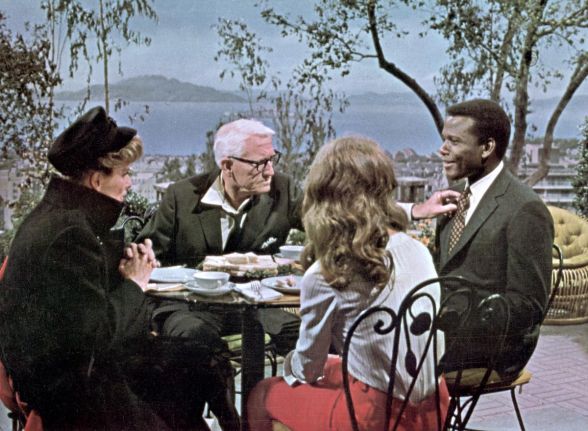
Katharine Hepburn, Spencer Tracy, Katharine Houghton and Sidney Poitier in ‘Guess Who's Coming to Dinner’, USA, 1967, directed by Stanley Kramer
© 1967, renewed 1995 Columbia Pictures Industries, Inc. All Rights Reserved.
Guess Who’s Coming to Dinner
USA, 1967, directed by Stanley Kramer
When Joanne Drayton brings her fiancé home to introduce him to her parents, they are not as happy as they might be. Dr. John Prentice is a respected doctor, but he is also African-American. Prentice tells Joanne’s father that he will only marry her if both her parents agree – and do so before he leaves the next day. Father Matt Drayton, a liberal journalist, feels pressured. While his wife Christina is taken with the depth of John’s love for their child, Matt foresees the couple facing a host of problems that he would like to spare his daughter. Over the course of a day, as they prepare for the arrival of John’s parents for dinner, the Draytons discuss the pros and cons of the potential marriage … ‘Guess Who’s Coming to Dinner’ made film history with the first interracial kiss on the big screen, at a time when miscegenation laws in the United States were front and center in public discourse. The film cemented Sidney Poitier’s status in Hollywood. But the emphatic and moving final monologue delivered by Spencer Tracy provided a fitting legacy for the great Hollywood actor, who would die bare weeks after the production wrapped. World premiere of the digitally restored version.

‘Mapantsula’, ZA/AUS/UK, 1988, directed by Oliver Schmitz
© Oliver Schmitz – Courtesy of What The Hero Wants (WTHW)
Mapantsula
ZA/AUS/UK, 1988, directed by Oliver Schmitz
During demonstrations in apartheid-era South Africa, police arrest not only activists but also Panic, a “mapantsula” or petty gangster. While a cop tries to get him to make incriminating statements, we learn in flashbacks how Panic got caught up in the township riots. Panic is only interested in partying, alcohol, and his girlfriend Pat, and stays away from the protests against exorbitant rents. But then Pat, who loses her job as a house maid because of him, cuts Panic loose, and his landlady’s son is taken away by the police … During the state of emergency imposed in South Africa in 1985, ‘Mapantsula’ could only be made after a “bowdlerised” screenplay was submitted to authorities. Grass roots opposition had reached a climax when the film was released and then promptly banned. Within a matter-of-fact crime story, it examines racial discrimination and day-to-day acts of resistance to the regime. Contemporary witness and film historian Jacqueline Maingard saw it at the time and remarked on the “euphoric intensity of the small audience, present at what felt like the first truly South African film”. World premiere of the digitally restored version.
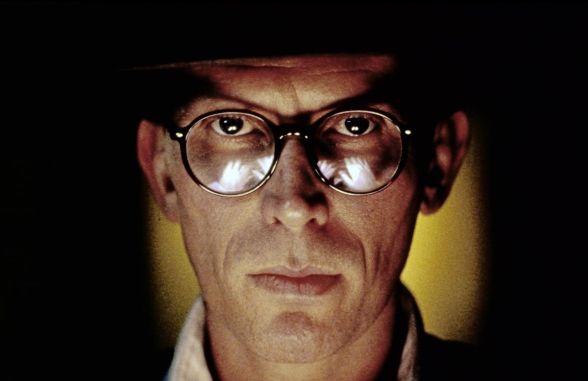
Peter Weller in ‘Naked Lunch’, UK/CA, 1991, directed by David Cronenberg
© Recorded Picture Company
Naked Lunch
UK/CA, 1991, directed by David Cronenberg
In 1953 New York, writer Bill Lee works as an exterminator, whereby inhaling an excess of insecticide has distorted his sense of reality. After accidently shooting his wife to death in a drugged haze, he flees to Interzone on the Moroccan coast, the stomping grounds for a variety of enigmatic characters. Functioning as a secret agent for a certain Dr Benway, he writes reports about a drug ring involving an American writer couple that mushroom into the novel ‘Naked Lunch’ while the protagonists change their identities at will, and typewriters morph into aggressive insects … “Exterminate all rational thought!” In his adaptation of a novel widely considered unfilmable, David Cronenberg has taken to heart that advice from Bill Lee, William Burrough’s alter ego. In a surrealist brainteaser full of monsters and mutations, body horror and literary allusions to the Beat Generation, what happens onscreen turns out to be pure cinematic hodgepodge, in which reality, drugged delirium, and literary fantasy imperceptibly segue into each other. “Nothing is true. Everything is permitted.” World premiere of the digitally restored version.
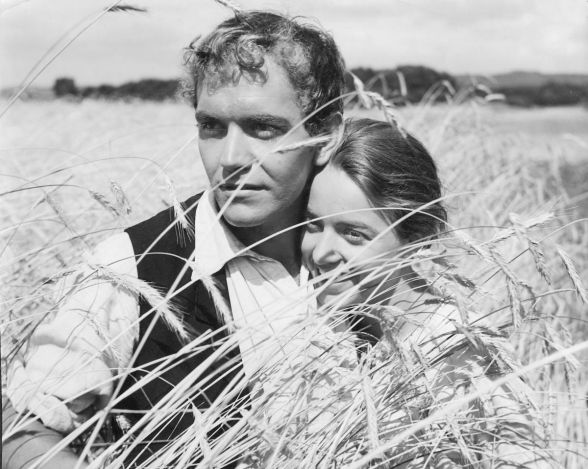
Erwin Kohlund and Margrit Winter in ‘Romeo und Julia auf dem Dorfe’, CH, 1941, directed Valerien Schmidely and Hans Trommer
© Collection Cinémathèque suisse. All rights reserved.
Romeo und Julia auf dem Dorfe
(‘Rome and Juliet in the Village’), CH, 1941, directed by Valerien Schmidely and Hans Trommer
Swiss farm children Vreneli and Sali are best friends. But they are separated when their fathers become mortal enemies in a dispute over a neighbouring piece of land. It is not until both the elders have been driven to ruin by the long legal battle that the two young people can reunite, this time as lovers. That leads to a fight with Vreneli’s father, whom Sali knocks down in the heat of the moment, rendering him disabled. The deed casts a dark shadow over the fresh blossom of love … In this film version of the novella by Gottfried Keller, the natural beauty of the Swiss landscape is merged with the artistic beauty of the truly lyrical black-and-white cinematography. With dialogue in the local dialect, Romeo and Juliet in the Village is in keeping with the traditions of poetic realism. But the ominous appearances of a “fiddler of death”, not least of all his night-time wedding dance unto death, give the tragic events an eerie aspect. The film was shortened several times, but now the “most beautiful and authentic of all Swiss films” (Freddy Buache) can be seen in its original length, with the original soundtrack. World premiere of the digitally reconstructed version.
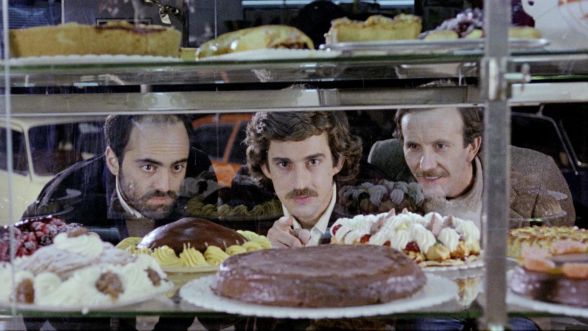
Claudio Spadaro, Nanni Moretti and Nicola Di Pinto in ‘Sogni d’oro’, IT, 1981, directed by Nanni Moretti
Sogni d’oro
(‘Sweet Dreams’), IT, 1981, directed by Nanni Moretti
When director Michele Apicella screens his newest movie in film clubs, auditoriums, cinemas, and even a convent, he faces a torrent of criticism, mainly that he hasn’t adequately represented the interests of farmers, housewives, and labourers. Meanwhile, work on his next film also takes a catastrophic turn. Titled “La mamma di Freud”, its lead character is a revenant of the famed psychoanalyst who, like the director himself, lives with his mother in a symbiotic love-hate relationship. On top of that, Michele has to ward off a rival who is making a musical about the 1968 student uprisings. When the two are pitted against each other on a TV game show, it takes on nightmarish dimensions. As does Michele’s reunion with a girlfriend who might, however, be purely imaginary … Woody Allen in Annie Hall is a poster child of normality by comparison with the cinema narcissist to whom Nanni Moretti gave form in five autobiographically tinged comedies. ‘Sweet dreams’ – lauded as a self-reflective satire about the film industry, with the tics and neuroses of filmmakers becoming the real show – won the 1981 Silver Lion in Venice. World premiere of the digitally restored version.
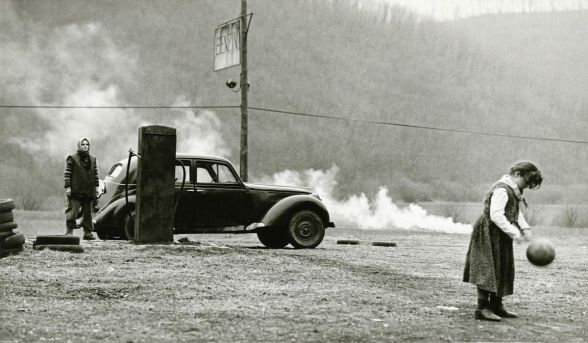
‘Szürkület’, HU, 1990, directed by György Fehér
Quelle: NFI – Film Archive © Inkey Alice
Szürkület
(‘Twilight’), HU, 1990, directed by György Fehér
A young girl is found sexually assaulted and murdered in a remote mountain forest. A peddler with a criminal record is suspected of the crime, but the investigating detective doesn’t believe he did it. He finds a drawing done by the dead girl showing a black “giant” and his car that he thinks is a picture of the perpetrator. Hoping to draw in the criminal, he sets up a mother and her young daughter as “bait” in an abandoned petrol station … This film adaptation of oft-used motifs by Friedrich Dürrenmatt is as austere as the natural world where it is set. György Fehér’s fascinating black-and-white film, in which a detective moves in an ethical grey area, is made up of about 50 camera set-ups using ingenious tracking shots and pans. As in the work of fellow Hungarian Béla Tarr (who was an advisor on this film), Fehér’s narrative style expands time. It makes the detective’s persistent wait, which stretches over several seasons, transparent, before the film surprises us with an alternate ending. World premiere of the digitally restored version.
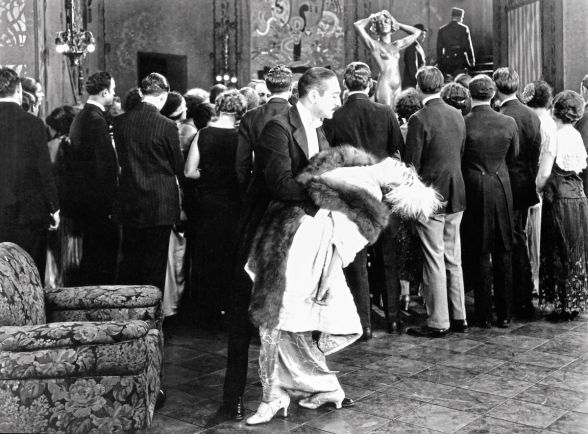
Adolphe Menjou and Edna Purviance in ‘A Woman of Paris’, USA, 1923, directed by Charles Chaplin
© Roy Export SAS
A Woman of Paris
USA, 1923, directed by Charles Chaplin
Lovers Jean and Marie want to leave their parents and elope to Paris. But fate prevents Jean from getting on the train. A year later, Marie has become the glamorous toast of Paris – and mistress of the city’s richest bachelor. When he becomes engaged to a woman befitting his stature, she is meant to remain in that position. But Marie yearns for a family of her own. When she accidently encounters Jean, now an artist living in the Latin Quarter, she accepts his proposal. But Jean disavows their love to his mother, so Marie leaves him. Jean is in despair … Charlie Chaplin spent a year preparing what would be his directorial debut for United Artists, the company he helped found. He himself appears only in a cameo as a porter. Directed with a keen eye for the world’s overburdened and servants, his elegant societal drama is impressive for the matter-of-fact approach of all its actors. It wowed the press and fascinated Ernst Lubitsch, but was a flop at the box office. After censors in the American hinterlands took their scissors to it, Chaplin pulled the film from release until the 1970s. World premiere of the digitally restored version with new music based on Chaplin’s compositions.
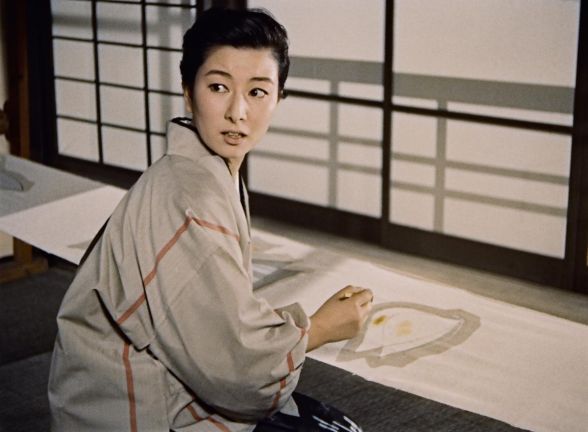
Fujiko Yamamoto in ‘Yoru no kawa’, J, 1956, directed by Kōzaburō Yoshimura
Yoru no kawa
(‘Undercurrent’), J, 1956, directed by Kōzaburō Yoshimura
Kiwa Funaki is an independent and successful woman. She creates kimono and tie designs that she markets herself from Kyoto, all the way to Tokyo. Her father, who dyes the textiles in his own factory, would like to see Kiwa married. But she rejects all her admirers, including a young artist and an obtrusive business partner. Then Kiwa meets a scientist from Osaka. Although she knows he is married, she begins an affair with him. But when his wife dies, she does not react as expected … ‘Undercurrent’ renders Kiwa’s textile designs, largely based on motifs from the natural world, in bold colours. And in his first colour film, director Kōzaburō Yoshimura uses his protagonist as an exemplar to proffer a “design for living” that is as unconventional and modern as her prints. In this utterly unsentimental melodrama, he shines a light on not only the growing influence of western goods and values in Japan’s post-war society, but also the tradition-bound formality of interpersonal relationships. World premiere of the digitally restored version.